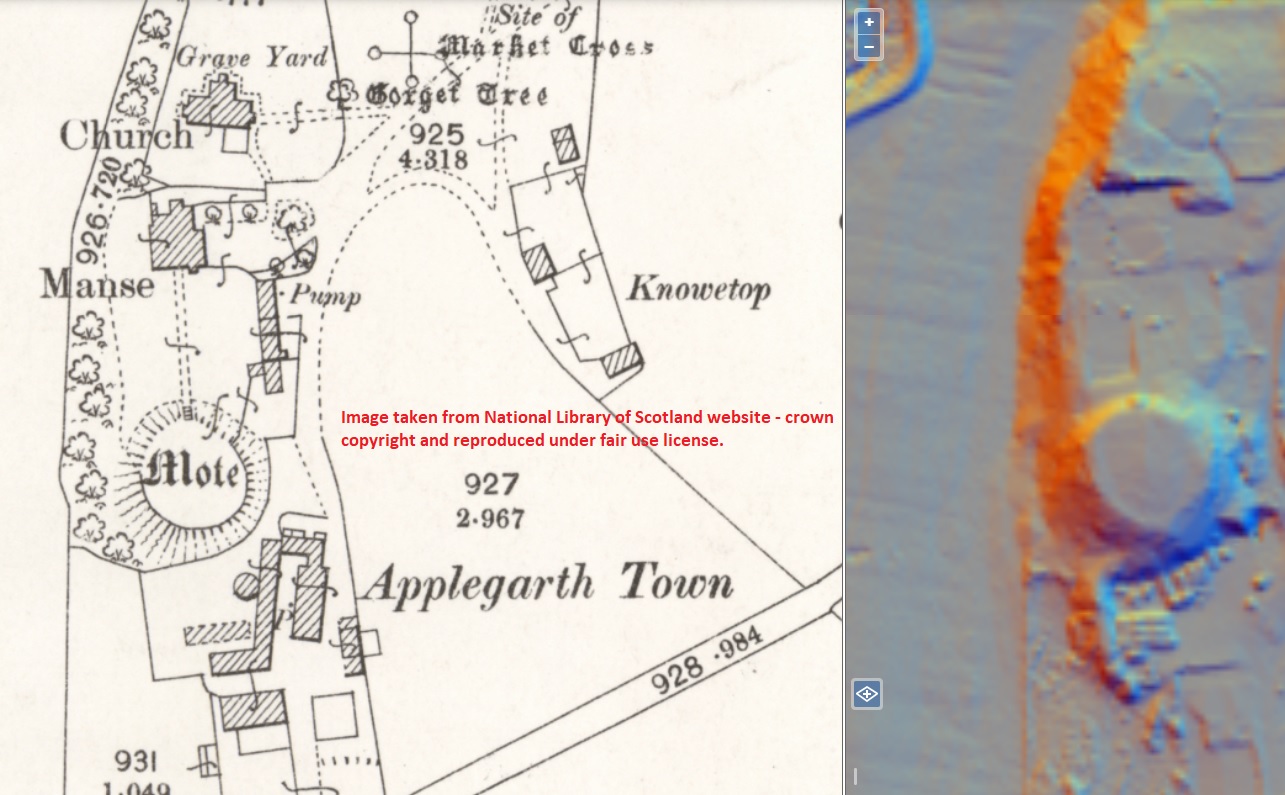Applegarth Motte

Applegarth Motte Details
Applegarth, motte on riverside site adjacent to working farm which occupies a possible bailey site
- Closest To: Applegarthtown,Lochmaben,Lockerbie
- Access: S.O.A.C. Public Access
- Grid Reference: NY104841
Applegarth Motte is a substantial round earthwork at the top of a steep bank overlooking the river Annan. Its proximity to the parish church make it seem likely this was the seat for a planned lordship during the twelfth century as part of the establishment of the Lordship of Annandale by the Bruce family. The level summit of the motte varies in height from two to ten metres above ambient ground levels, and measures about thirty metres in diameter, which is sufficient for a standalone castle with no requirement for a bailey – although the farm between the motte and church may occupy the site of a small defended settlement serving this purpose. The castle was undoubtedly damaged during the Wars of Independence, although there is no known history of Applegarth at this time. It is only in the 1360s that one Humphrey de Jardine is referred to as lord of Applegarth – by which time it is unlikely that the castle was in good repair.
The Jardines were knights who held land under the Bruces from the 12th century, the earliest references being to their witnessing Bruce documents from this period. However, there was a family known as “de Applegarth” in the 12th century as well, and one Ingebald was granted the land for a knight’s fee in the late 12th century, confirmed to his son Hugh about 1215. It may be the case that Hugh’s daughter then married William de Jardine who held the property afterwards. Whether Applegarth remained in use as the seat of the lordship after the Wars of Independence is unknown. However, the naming of John Jardine “of Applegarth” in 1476 indicates that it was, and the New Statistical Account records the presence of a stone vault on the motte would seem to confirm this. Excavation would, of course, resolve the matter. Regardless of this, in the late 15th century the family founded a new seat at Spedlins, and we can be certain that the old site was abandoned at this time.
Become a supporter of my work to access a more detailed history